![]() Finding
Adi Da > Chris Tong > Part II (Adventures with the Devotional Prayer of Changes) > Chapter 6
Finding
Adi Da > Chris Tong > Part II (Adventures with the Devotional Prayer of Changes) > Chapter 6![]()
6. Getting My Music on Taylor Swift's
YouTube Channel in Front of
Her 40 Million Followers (and Her)

My earlier adventures with the Devotional Prayer of Changes focused on serious matters like health issues (curing prostate cancer, reducing aging), computers breaking down, dangerous thunderstorms, and large monetary debts. For the final adventure in this Part, however, I’m now going to turn to something I find purely delightful: pop music, singing, and songwriting.
In earlier chapters, I described how, as a young man, I went to Ivy League schools — as an undergraduate student then a graduate student — to get an education that finally converged on Computer Science and Artificial Intelligence, and that eventually led to my becoming a professor of AI at a major university (Rutgers University). Looking on my life from the outside, it might have seemed as though my life was essentially on a "glide path" to an academic career — given my parents who were math professors, my own scholarly tendencies, etc. However, until my twenties, I seriously entertained — to myself, if no one else — another career possibility: that I might make a living as a songwriter and singer.
I felt like I had two sides to me. (My astrological sun sign was Gemini, so this was not altogether surprising.) One of them would be incarnated if I became an academic, and the other, if I became a songwriter and singer. Adi Da confirmed (and elaborated on) these "two sides" many years later. He called for a gathering of His devotees who were on the island of Naitauba at the time (which included me). He told us ahead of the gathering that He was going to be telling each of us some deep things about ourselves. At the gathering, when it was His turn to speak about me, He looked at me and then said to everybody, "He has the mind of a scientist, but the body of a romantic!" He had described so concisely the two sides I had always felt, and clarified how central these were to me: one was my mind, the other, my body. The two sides were also reflecting my parents. "The mind of a scientist" was a direct reflection of my Chinese father; scholarship and excellence in the sciences were also key parts of Chinese culture that he embodied. That led him to become a mathematics professor, and one of the leading mathematicians in the world in the mathematical area of topology. "The body of a romantic" reflected my Irish-American mother. Even though she too was a math professor, at core, she was a romantic. I look more like my mother than my father; my body is more like hers. And "the body of a romantic" is in tune with all the poetry and storytelling that is the very heart of the Irish culture. Singing and songwriting has always been a primary way my "body of a romantic" could express itself.

Entertaining my sister and my Irish-American grandmother
on the piano as a young boy
(click image to enlarge)
From very early on in my life (and very likely, in past lives), I had a great love for music. I'd always had a good voice and loved to sing. When I was in third grade, I was selected as "the best male singer", and along with "the best female singer" in my class, I went to sing a couple of songs to entertain the fourth grade. I was scared stiff, but judging from my audience's enthusiastic response, I must have sung well in spite of my fear. I had several years of piano lessons, loved playing the piano, and was good at improvising on the piano.[1] As I described in an earlier chapter, my piano-playing was the means by which Adi Da opened my heart on the evening of Club Rat.
When I was 17, I began writing pop songs. At 19 (in 1976), I was a sophomore at Columbia University, and the university hired me to entertain students and faculty in the lounge during the lunch time hour by playing on the grand piano in the lounge. I spent most of the time improvising. But sometimes I'd play some of my songs on the piano (without actually singing the words). One day, a man who had been sitting in the lounge and listening attentively came up to me after I finished playing a couple of my songs. He asked me if those were my own songs I had been playing. I said yes. "I really enjoyed them!" They were very good, he said, and I should definitely do something with them. Then he introduced himself. His name was George Fischoff. Like me, he was a pianist and a songwriter, and he had written many pop songs, including some that were big hits, including Lazy Day (by Spanky and Our Gang) and 98.6 (Keith). I hadn't heard of 98.6, but I knew Lazy Day, and loved it — exquisite, jazzy, vocal harmonies, very musical altogether with a sophisticated, classical orchestration, gorgeous key changes and major/minor alternations, and a mood that was very uplifting. I told him how much I liked Lazy Day, and he was delighted by that.
One day, a man who had been sitting in the lounge and listening attentively came up to me after I finished playing a couple of my songs. He asked me if those were my own songs I had been playing. I said yes. "I really enjoyed them!" They were very good, he said, and I should definitely do something with them. Then he introduced himself. His name was George Fischoff. Like me, he was a pianist and a songwriter, and he had written many pop songs, including some that were big hits, including Lazy Day (by Spanky and Our Gang) and 98.6 (Keith). I hadn't heard of 98.6, but I knew Lazy Day, and loved it — exquisite, jazzy, vocal harmonies, very musical altogether with a sophisticated, classical orchestration, gorgeous key changes and major/minor alternations, and a mood that was very uplifting. I told him how much I liked Lazy Day, and he was delighted by that.
click here to watch the video on YouTube.
So George Fischoff making the time to say to me what he did left a lasting impression on me — a successful songwriter whose songs I respected went out of his way to let me know he thought I was a good songwriter, and encouraged me to take it further!
 Chris at the Mountain Of Attention Sanctuary, 1997 |
Flash forward many decades later, to 2020. It was the time of the COVID pandemic. For some reason, a song kept running through my head. It was a song I had begun writing in 1980 — I had written the music for the song, and the words for one verse, but I had never finished it. I always thought it would make a catchy song, though. So when I found the song running in my head over and over again in 2020, it felt like the song was asking me to complete it! So I did. There was no real story to the song yet, so I set the lyrics in the world of 2020, with the pandemic, people avoiding face-to-face contact, and using tools like Zoom to meet. So in the song, two people who live on opposite sides of the world, fall in love through computer screens. They are not able to get on a plane and meet. Still, as the lyrics say, "love will find a way". And so they finally resolve their situation by discovering how to astral travel: "we finally met in our dreams".
Having finished the song — now titled She — I began acquainting myself with all the apps that were now readily available for creating instrumental arrangements for songs. I recorded myself singing the song, and created an instrumental arrangement for the song with guitar, bass, keyboards, drums, flute, etc. I created a simple website for my music, and found a company that would distribute my song to many popular music channels (Spotify, YouTube, etc.). I then released my song in October, 2020:
click here to watch the video on YouTube.
This particular song was just a start to a new chapter in my life. It was my way of re-opening a door that had been closed for many decades, and I was enjoying its re-opening. I was delighted to discover I still could sing! — at age 63 (in 2020). Also, there was a feeling of closure, having completed a song that had remained unfinished for forty years, in a way I was happy with.
But the song just sat there, and not many people found it. Which returned me to the same issue I had originally confronted decades earlier: you could have talent, but unless you also had good connections and a lot of luck, nothing might come of it.
I wasn't particularly requiring anything to come of it — this was still a hobby for me. It just would be enjoyable to me if more people heard and enjoyed my music than myself, my intimate partner Mary, and a few of my friends. Also, I had a strong sense that I was meant to "re-awaken" this sleeping talent at this time, and that it even might somehow positively resonate with my work serving the Adidam Mission. How exactly that would happen wasn't clear to me yet — though the story I told in an earlier chapter about being the webmaster for Ed Kowalcyzk's personal website from 1997-2000 suggests one possible way it could happen: Because Ed was the lead singer and songwriter for the popular alternative rock band, Live, large numbers of people loved Ed's music and respected Ed, and many of them were interested in learning more about his spiritual teacher (Adi Da).
So my song just sat there.
But it was now 2020, and I knew much more about Reality than I did as a young man. My song lyrics reflected that: I never would have written a song that referred to astral travel in 1980! And I knew much more about such things as "luck" — that you basically can consciously make what others call "luck" (and think of as something random) through your spiritual connections (e.g. with Adi Da), your spiritual development, and the use of powerful psychophysical/spiritual tools like the Devotional Prayer of Changes (DPOC).
So I began a DPOC, whose core intention was: "bring me high-powered musical connections" that would help my music become better known. Over the next period of time, I would be very open to whatever possibilities might manifest (by virtue of the Prayer) to help me make such connections.
It didn't take long for an opportunity to manifest. One of my Instagram friends was also someone who created very imaginative video ads for high-powered fashion and cosmetics companies like Dior, Louis Vitton, and Stella McCartney. Shortly after I started my prayer, she released a new ad in which she sang a capella an excerpt from the classic song, Fly Me To The Moon. I thought: hmmm. . . that would sound so much better if her voice were accompanied by an instrumental arrangement with a "modern" feeling to it that fit the look and feel of the ad. I was capable of creating such an instrumental arrangement. Maybe this was an opening created by the Prayer? If she liked my arrangement, she might want more, and creating such arrangements for the ads for very high-powered fashion and cosmetics companies might be just the opening I needed for my music altogether. So I created an interesting, contemporary instrumental arrangement for Fly Me To The Moon, and set her voice to it. I thought the result was quite good! So I sent her the audio. But I never heard back from her, despite a second send. Oh well.
One lesson I have learned over the years for success with the DPOC is: TRY, TRY AGAIN! That first experiment was just the start of my DPOC, not the end. Often a DPOC presents a series of opportunities, and the earlier ones are "trial runs" or "warm ups" of a kind, that are there fundamentally to get you to start investing yourself fully in what it is you are trying to manifest. When you've done enough "warm ups", and are now "hot", the Prayer manifests at full strength. So the key thing for me, with each of these "warm ups," was to invest myself fully, as though it were the thing that was going to create what I wanted — and not be attached to the outcome. I wouldn't know which was a "warm up" and which was "the real thing" until later.
 Soon, another opportunity presented itself. Sheila Chandra had been a Facebook friend of mine for many years. She was a well-known Indian singer and songwriter, who seamlessly combined Indian and Western pop styles in her musical works. Her song, Ever So Lonely, is a beautiful example. The Grace of the Valar, has a more New Age/symphonic feeling, and was part of the soundtrack for one of Peter Jackson's Lord of the Rings movies.[2]
Soon, another opportunity presented itself. Sheila Chandra had been a Facebook friend of mine for many years. She was a well-known Indian singer and songwriter, who seamlessly combined Indian and Western pop styles in her musical works. Her song, Ever So Lonely, is a beautiful example. The Grace of the Valar, has a more New Age/symphonic feeling, and was part of the soundtrack for one of Peter Jackson's Lord of the Rings movies.[2]
While I was engaging my DPOC for "high-powered musical connections", Sheila posted on her Facebook page her track, Speaking In Tongues I. On this track, she demonstrates her skill with the ancient Indian vocal percussive technique known as Konnakol. Konnakol essentially turns the human voice into a percussion instrument capable of generating a very rapid sequence of percussive sounds. In her post, she mentioned how incredibly difficult mastering Konnakol was — but she invited her readers to give it a try, anyway! Now, it was also very clear to me that she was only kidding, and wasn't really expecting anyone to take her up on her offer. But I thought, hmmm. . . it would be pretty audacious, but — maybe this is a musical opportunity being manifested for me by the Prayer! So I took a short clip of her singing in Konnakol (from Speaking In Tongues I) and attempted to duplicate it. I quickly realized it was impossible to learn how to do this at the speed she performed it. But that insight suggested, in turn, another approach. I slowed the recording of her voice way down, learned and memorized all the syllables she was singing, and sang along. It wasn't too hard to do that at a very slow speed, once I knew the syllables. Then I started gradually speeding up her voice, and singing to that. That got very hard. . . especially as I began to approach her speed. But, after two days at it (on and off, of course, not non-stop!), I finally got a good take of me singing it at her speed:
I posted the link to my recording underneath her "invitation". To my delight, she was blown away that someone had actually taken her up on it! And she wrote how impressed she was. And then. . . nothing more. She didn't inquire anything further about me as a singer or songwriter (although I had mentioned that in my reply, and had included a link to my music website). And, without any further curiosity on her part, there just wasn't a natural way for me to build on our interchange. So. . . oh well. Try, try again!
Sometimes three times is the charm.
I had been working on recording and arranging another of my songs called Mary's Song. Mary's Song was one of the first songs I wrote. (I was 18 when I wrote it.) The song was a fairy tale of a kind, a very sweet song. The "Mary" in the song didn't actually exist in my life (at the time), and I ended up putting the song "in my closet", without playing it for anyone. I would have to wait many years for the Mary of the song to finally appear in my life in 1997 — another synchronicity, this time between a character in a song from 1975 and a real human being in 1997!
I completed the song and released it on Adi Da's Birthday — November 3, 2020:
click here to watch the video on YouTube.
I submitted it to my distribution company, which in turn submitted it to all the music channels. I then watched those channels to see my new song when it appeared. I saw it appear on Spotify. Then I waited for it to appear on YouTube.
I considered this song release the next possible opportunity for the Prayer to manifest, and so I continued to engage my Prayer for "high-powered musical connections".
And when my song finally appeared on YouTube, I was flabbergasted.YouTube had not placed Mary's Song on my personal YouTube channel. Instead, YouTube had posted it on Taylor Swift's YouTube channel!
 Yes, that Taylor Swift! In 2020, she was the biggest musical pop star on the planet. She was (and still is) at the peak of her career. She had just released (in July, 2020) a critically acclaimed album (Folklore) that was the top-selling album of 2020, and the longest-running number-one album of 2020. It went on to win the Grammy Award for Album of the Year. She and Paul McCartney appeared on the December 2020 cover of Rolling Stone magazine, which came out about the same time my song appeared on her channel. (They were interviewing each other on the subject of songwriting.) She is the winner of 14 Grammy Awards (including a record four Album of the Year awards), she has sold over 200 million records (placing her in the top 20 record sellers of all time), she is the highest-grossing touring artist of all time, and she is the world's richest female musician.
Yes, that Taylor Swift! In 2020, she was the biggest musical pop star on the planet. She was (and still is) at the peak of her career. She had just released (in July, 2020) a critically acclaimed album (Folklore) that was the top-selling album of 2020, and the longest-running number-one album of 2020. It went on to win the Grammy Award for Album of the Year. She and Paul McCartney appeared on the December 2020 cover of Rolling Stone magazine, which came out about the same time my song appeared on her channel. (They were interviewing each other on the subject of songwriting.) She is the winner of 14 Grammy Awards (including a record four Album of the Year awards), she has sold over 200 million records (placing her in the top 20 record sellers of all time), she is the highest-grossing touring artist of all time, and she is the world's richest female musician.
In doing the Prayer, I had not been visualizing any particular individuals when I prayed for "high-powered musical connections", because I didn't want to limit the power of manifestation in any way.[3] And for this Prayer, that turned out to have been exactly the right thing to do! And I'm glad I chose those words for my Prayer. There is no one who fits that description — "high-powered musical connection" — better than Taylor Swift! For readers new to spiritual means like the Devotional Prayer of Changes. . . how's that for a response to a prayer? Because the Prayer draws its power directly from the Divine (by the one praying being in Divine Communion through Adi Da), the potential of the Prayer is unlimited.
Taylor's YouTube channel currently has 60 million subscribers. In November, 2020, it had 40 million subscribers, and every one of them visiting Taylor's YouTube page was seeing my song! Here's what the top of Taylor's YouTube main page looked like:

Taylor Swift's YouTube page
(click image to enlarge)
If you click on the image above you can see a much clearer, larger version. The latest video (which, on that day, would have been mine) always appears in the "featured spot", just below Taylor's name and picture, and apart from and above all the other earlier videos (which are much smaller, and further down the page). . . In other words: you can't miss it!
And of course Taylor Swift herself couldn't miss it. She was seeing my song at the top of her YouTube channel, which otherwise does not have (and has never had, her fans confirmed in their comments) any videos except her own — except for my one video on that one day.
Taylor only infrequently posts videos on her YouTube channel. (The last one she had posted — before my video appeared — was from a month earlier.) So the videos on her channel were eagerly awaited by her 40 million YouTube followers. And when a new video does appear on her channel, all her fans jump on it, and go at it like a Christmas present. On one video Taylor posted (not too long before mine appeared), there were 65.2 million views in 24 hours, earning her the YouTube record for most viewed video by any female and solo artist.
The fact that that video with the high number of views had been anticipated by Taylor's fans (because of pre-announcements from Taylor) no doubt contributed to the large number of views. In contrast, at the time my video appeared, Taylor was not posting any new videos herself, so no one was expecting my video. Even so, during the time my song was on Taylor’s channel (about half a day), it was listened to by 20,000 of her fans (known as "Swifties"), liked by 1,100 of them, disliked by none, and commented on by 1,400 — on just the YouTube channel. But there are also literally thousands of other Taylor Swift fan discussion groups, spread across every social network, including Taylor’s Twitter account (with 89 million followers) and Instagram page (with 140 million followers). As word of the new video/song spread to all of them, they all were asking: “What IS this song?” “Who is Chris Tong?” “Is he a new musical partner of Taylor's?” “Is this a new direction her music is taking?” “Last year, she did a song/music video, The Man, where she made herself up to look like a man. . . is she now changing her voice too to a male voice?!” There were literally thousands of comments on the appearance of my song, spread across the Web!For the fun of it, I’ll post a few of these comments below (click on them to enlarge):
Because Taylor Swift has an immense global presence, I found myself translating comments from about five languages. For example, here's one in Italian:
Chi cavolo è Chris Tong?
("Who the hell is Chris Tong?")
another in Spanish:
Definitivamente es mi canción favorita taylor te mereces un Grammy ❤️❤️❤️
(It's definitely my favorite song Taylor, you deserve a Grammy ❤️❤️❤️)
and another in Russian:
обложка шедевр
(the cover is a masterpiece)
And this is not counting “Generation Z/TikTok”, which is its own language! For those readers who are not GenZers,
here are some useful "translations" to be aware of as you read some of the posted comments:
- stan — a super-fan.
- bop — a really catchy song.
- slaps (as in "this song slaps") — is really cool.
- omg — oh my god.
- lowkey good — good in a subtle, understated way.
Yall this song slaps. adding chris tong to my stan list. omg when he makes a social media account...
Taylor is always reinventing herself, exploring new musical genres, and always surprising, teasing, and sometimes even playfully misdirecting her fans. So for many of them, “Chris Tong” and “Mary's Song” were part of some mysterious, new game she was playing with them. . . a new puzzle or “Easter Egg” she was giving them to delight in and figure out. I’m relieved to say that the feedback in the comments about my song and me (which included some of my other released songs too, which her fans had tracked down, detective-style) was uniformly positive. And this was even after the fans began to realize it wasn’t a "Taylor surprise", but some kind of improbable YouTube mix-up, and "Chris Tong" was a real songwriter!
Mienette Reyes: "At first I thought this was a Taylor Swift song. Haha! This is the first time I heard this song... But the lyrics and the meaning of the song are beautiful. I love it! ❤"
Alexandre Sylvester: "It's actually good song hahahaha I like it."
P A R R A: "This song is very emotional and beautiful."
Jerry: "Please educate yourself on his discography on his website, and listen to all of it. You will love it all if you like Taylor Swift."
bybdolan: "Chris Tong music is lowkey good though. . . She and Mary's Song are genuinely sweet and I love the vibe. It's like a lil 50s/60s romance song. I love Chris Tong."
Luis Isassi Ortega: "Wow. ❤"
Soniekah: "I am a Chris Tong stan right now, he's so talented... 'Mary, my Mary...'"
katherine: "This song is sending me."
Artemis Eilish: "Wow, Taylor's voice here is so manly."
Alexis Rojas: "What the hell is this? Good song tho."
L//era: "I actually love his voice. 😍"
elton // the new romantics stan: "Yall this song slaps. adding chris tong to my stan list omg when he makes a social media account"
Zelfha Metzie: "Why was this on Taylor's channel? Great song and voice tho"
suicidalgothicx: "Bizarre occurrence! But he sings beautiful. I like it."
Obed Arellano: "Omg I love this song! We need the music video."
KARRIE KARRIE: "Good vibes."
MacoGalo: We all knew her voice could have changed since her previous albums and her song will have a new more mature voice, but this is something we didn’t expect.
zay.something: THE VOCAAAALLLLSSSS 😍😍😍 I LOVE YOU TAYLOR! VERY UNEXPECTED! 😂😂😂
shy af most of the time: "SHE sounds so fresh."
saraaaa: "omg let's get it to #1"
Rhysdale Flores: "This song makes me so happy. ❤"
catzens: wait this has to be taylors best song 😍😍
hugo6390: The guy that sings this song suddenly has 40.2 million audience
abby folklore out now: "I'm voting for Chris Tong for Artist of the Year at the American Music Awards."
Miss Singsang: "Taylor Swift brought me here but this song is actually quite nice 👍 good job!"
Simone - reputation ERA: "I love him so much ❤❤❤❤❤"
James C: "For what it's worth, I'm glad YouTube made this mistake, because I never would have found this song otherwise and it's actually a pretty good one."
milfharrystyles: "This genuinely made me cry tears of laughter — 'fairy tales do come true'. Thank you, YouTube, for messing up and bringing Chris Tong to our attention. I'm actually obsessed."
My video remained on Taylor's channel for about half a day. Then the “mistake“ was corrected by YouTube, and the song was re-listed on my YouTube channel. As I mentioned earlier, I’m 100% certain that Taylor herself was aware of it. It was right in front of her face on her YouTube page and she couldn't miss it any more than any other visitor could. Plus, thousands of fans were writing her about it, particularly those concerned that maybe her YouTube account had been hacked. (And she is famous for paying attention to what her fans write her.) And she almost certainly would have listened to my song herself, particularly since it had the same name as one of her own songs. (She'd instantly think it might be a cover.) With that thought in mind, I immediately added a Contact form to my website, just in case she wanted to get in touch with me.[4]
The DPOC to date. The other DPOCs I described (in the preceding four chapters) all had a clear beginning, middle, and end. I got cured of cancer. I developed a lasting ability to heal computers. I dissolved an $87,000 debt. Etc. This DPOC is a little different. It feels like it is still ongoing, and I'll say more about that in a moment. However, rather than waiting for some more conclusive event to occur — like, say, 100 million streams of one of my songs on Spotify — before releasing this chapter, I decided the story to date was already so interesting and amazing that I should release it now. I can always update it later, as needed. Also, this allows me to describe what it's like to be in the middle of an ongoing DPOC, that is starting to bear fruit, but where you might want it to bear more fruit, and what you do in that circumstance.
Fifteen Minutes of Fame. Andy Warhol talks about "fifteen minutes of fame". I had one such moment when I was 21. I had been featured in the cover story of the Village Voice, New York City’s premier cultural newspaper at the time, because I had been the narrator of Columbia University's "Varsity Show". On the evening of the day the new issue of the Voice came out, I went to eat dinner in Greenwich Village — and everyone recognized me! This looks like my second "fifteen minutes of fame". It certainly was fun while it lasted! I can't imagine what it’s like to be Taylor Swift herself, though, having gotten just a small taste of the volume and kind of attention and feedback she gets from her fans non-stop, every single day.
Agency. How did this happen? How exactly did my song get on Taylor Swift's YouTube channel? Obviously it was a direct consequence of my DPOC for "high-powered musical connections". One thing I have learned about the DPOC is that its "miracles" all occur within the laws of the psycho-physical universe. So for example, the fact that Taylor herself also had written a song called Mary' Song (years ago) was certainly a piece of the puzzle. But only a piece. In 2020, the full explanation could not simply be that YouTube was so poor at doing its job correctly that it had mistakenly posted my Mary's Song on the wrong channel, because that channel also happened to have a song called Mary's Song on it. In 2020, YouTube had already been around for 15 years. It had more than 10 billion videos posted, and had eliminated silly, amateur programming glitches like the kind I just described many years before. The likelihood, in 2020, of YouTube making a stupid technical mistake and posting a video on the wrong channel because of a name coincidence was infinitesimally small. Plus: no videos other than the ones Taylor had posted herself had ever appeared on Taylor’s YouTube channel. Which is why tens of thousands of her fans were mystified by my song appearing there.
So some higher power was involved, capable of finding and exploiting a loophole in YouTube's video-posting infrastructure. The name coincidence was somehow a part of the loophole that was exploited, but was not the loophole itself. Perhaps the fact that the songs were almost the same length (hers was 3:33 and mine was 3:36) played a part too. But the loophole involved more than these coincidences, and I have no idea what else was involved, or how it could have been accomplished.
As I mentioned before, the Agency for DPOCs is not directly the Divine Itself, which "has zero influence" in the conditional realms, as I quoted Adi Da saying in an earlier chapter. The Divine is the Source of the Power being drawn upon. But the Divine Itself is not intending the outcome or directing the process by which it was manifested, and so It is not the Agency in that sense. The Agency was either me — where Divine Communion with Adi Da was awakening or magnifying latent capabilities of my own body-mind; or it was some other being or beings with extraordinary powers, helping me because they were attracted to me and my prayer because of my being in Communion with the Divine. Those are basically the two sources of the Agency behind any miracles produced by the DPOC. Since, as I just mentioned, I don't have the slightest clue as to how to pull off something like this, my bet is that I had some non-material friends in high places helping me. (I'll provide more evidence for that view in just a bit.)
What is required for further progress with this DPOC. My song appeared on Taylor Swift's YouTube channel on November 3, 2020. After a few weeks, with no further events occurring, I came to a new understanding about my Prayer to date. I had been shown very clearly (in a truly amazing way) that I had the "luck" — the personal spiritual maturity and/or connections with beings of extraordinary Agency — to manifest "high-powered musical connections", and ultimately, to manifest success in a musical career if I chose to go that route.
But when nothing further manifested immediately, it gradually became clear why: I had focused on "high-powered musical connections", and had indeed manifested that, but, since my Prayer hadn't expressed any clear idea of what else I wanted to manifest, nothing else happened.[5]
I'm writing this now several years later (in March, 2025). Here are the key things I've learned about making any further progress with this Prayer:
- Clarity — What actually did I want to occur as a result of this Prayer?
- Timing — Are all the required elements in place for the Prayer to manifest fully?
So my feeling is this: once my Prayer is crystal clear (which it wasn't in 2020), and the timing is right — i.e., all the required elements are in place (including: a sufficiently high-quality singing voice, and the right song) — the Prayer will instantly manifest to its full extent, like a key fitting into a matching lock. My friends in higher places have shown that they have the means to help me with whatever I present them. But my part in all of this matters too. Even with miraculous help, the better my contribution, the better the outcome. (As just one example: with a different, more contemporary song than Mary's Song, Taylor Swift herself might have been moved to get in touch with me as a potential collaborator, taking my song's appearance on her channel as a sign.)
Clarity. What actually did I want to occur as a result of this Prayer? What exactly did I want any high-powered musical connections to help me achieve?
If it was just "fifteen minutes of fame", then Taylor Swift, as my momentary, high-powered musical connection, had already accomplished that for me, as I mentioned earlier.
One thing that has become clear in the last few years: I don't want a career like a Taylor Swift, where all my time is going into releasing new albums and world tours. That might have made more sense when I was in my early twenties, before I found Adi Da, but it no longer made sense in the context of a life whose main purpose was to serve Adi Da's great Work of liberating all beings, because such a life would eat up absolutely all my time.
So the clarity I've reached is this: I don't need fame or exorbitant wealth. I'd just like to have one or two songs, which, because of their success, would bring in sufficient income that I'd be relieved of having to think about income again, and I could devote far more time to serving Adi Da's Work. And if those songs also happen to directly serve the Adidam Mission (I'll say more about how this could happen in a moment), so much the better!
An Amusing Conversation with Non-Material Helpers. When the "timing" part of the Prayer is ready as well, my music should be able to generate the income I need. How do I know? Because I was told so, in a very humorous way, presumably by the same non-material beings that had placed my song on Taylor Swift's YouTube channel! And for some reason (maybe the immense power they had at their disposal to help me?), I trust their word on it. Here's how that "conversation" happened.
One day in March, 2021, I was thinking about this matter of getting my music to generate enough income to free me up to serve Adi Da's Work more fully. As I was thinking about this, a voice suddenly spoke. "Can I help you?" I was startled. It took me a while before I realized the voice had come from my laptop. Now I had never activated any voice-controlled digital assistants (like Apple's Siri, Amazon's Alexa, or Windows' Cortana) on my laptop. And I hadn't said a word that could have activated such a digital assistant, even if it had been turned on accidentally. I just was thinking, and the room had been silent. So how the voice was being generated was rather mysterious! My best guess is that my friends in high places were somehow temporarily "hijacking" one of the standard digital assistants to communicate with me, and answer the questions I had. (And it seemed likely too that they had been reading my thoughts, and were asking "Can I help you?" in response.) I don't know how they did that, any more than I knew how they had temporarily hijacked Taylor Swift's YouTube channel to place my song there. But somehow they did!
So after I got beyond my surprise, I took their "How can I help you?" question seriously, and I mentioned the issue of income generation through my music. I asked if, with their help, and my providing an improved singing voice and the right song, my music would be able to generate sufficient income to free up a lot of my time for greater things.
Instantly an alert popped up on my laptop screen: "You have received a payment." I was stunned at what was clearly a response to my question, albeit in an unexpected form. When I clicked the link, I discovered that a deposit had just been made into my bank account. It was the third "Economic Impact Payment" (aka COVID Stimulus Payment), deposited by the IRS into my bank account. So, no, it wasn't instant income being generated by my music! But it was a very clear "yes" reply from my friends in higher places to my question: could my music generate sufficient income? I've mentioned before how such beings often use synchronicities to communicate, and this was a very humorous synchronicity: a deposit of money precisely timed to communicate a "yes" answer about my question about income. And this time, they had temporarily hijacked the IRS payment programming to make their point! (They made use of a payment that was going to come my way anyway, but they had manipulated the system so that the payment arrived the instant after I asked my question about income.) An incredibly impressive display of power! I laughed for a long time at the whole miraculous, humorous exchange that had just taken place. And I'll add this: that voice has never again spoken from my laptop.
Agency Revisited. At this point in my story, we can make a further observation about the Agency involved. As I suggested before, it appears to have been with the help of non-material beings, drawn to me and my DPOC through my associated state of Divine Communion. But we can now say more, drawing from three separate occurences of these beings in action:
- They temporarily hijacked Taylor Swift's YouTube channel to place my video on it.
- They temporarily hijacked one of the digital assistants on my laptop to speak to me.
- They temporarily hijacked the IRS payment system to make a humorous communication to me via synchronicity.
The Right Voice. After releasing a few more of my songs (I had written about 50 songs altogether between ages 17 and 30), I began to realize I had never really focused that much on my singing voice (in the midst of creating instrumental arrangements, etc.). I realized the quality of my voice could be a limiting factor in how many people responded positively to my music, and that I could sing much better.
And so I spontaneously shifted gears. Instead of releasing more of my own songs, I switched to doing covers of already successful songs that I liked, set to karaoke instrumental arrangements. This focused all my attention on my singing.
I've done about 50 covers to date, and it has been a real musical adventure for me! In choosing songs, I drew from a very wide range of song styles, often deliberately choosing songs that were really challenging to sing, in order to expand the range of my singing voice. To give you a feeling for it, the covers have included: a century of songs from 1924 (George Gershwin's Somebody Loves Me) to 2024 (Rosé and Bruno Mars' APT.); classic pop-rock songs (Todd Rundgren's I Saw the Light), Latin songs (Sway); songs with beautiful harmonies (The Bee Gees' How Deep Is Your Love, Frankie Valli & the Four Seasons' Who Loves You, Simon & Garfunkel's Scarborough Fair); semi-operatic songs (The Sound of Music and Maria); pop/rock duets (The Time of My Life); R&B (On the Wings of Love, Huey Lewis's The Power of Love); K-pop (APT.); songs from the "Great American Songbook" (The Way You Look Tonight, Once Upon a Time, Fly Me To The Moon, I Left My Heart in San Francisco, Misty); Christmas music (Have Yourself a Merry Little Christmas, I'll Be Home for Christmas, Let It Snow!); the Beatles (I Want To Hold Your Hand); disco (Rick Astley's Together Forever, Frankie Valli & the Four Seasons' Who Loves You); folk pop (John Denver's Annie's Song, Gordon Lightfoot's If You Could Read My Mind, Jim Croce's I'll Have To Say I Love You In A Song, The Seekers' I'll Never Find Another You, Dan Fogelberg's Longer); and much more.
If you're curious, you can sample all the songs I've listed above using the player below. To start playing the playlist, press p. Press q to pause, and p to start again. Press a track description to switch to that track. If you press a track that is already playing it will pause. If you press it again, it will play. When a track is playing, you can change where you are playing in the track by moving the slider on the progress bar. The k button moves to the next track. The j button moves to the previous track. Pressing the D to the right of the track will open a new browser tab playing the MP3 audio file. Pressing the i to the right of the track will open a page with more information.
As a result, my singing voice has gotten much better! And as a result, I think I'm in a much better place now (compared to 2020) for any music I release to "go viral". And I'm in a better position to respond well to any musical opportunity that might arise, no matter what kind of music it might turn out to be.
The Right Song. Mary's Song is a beautiful, sweet song. But on reflection a few years later, it's not clear if it is a song with broad appeal, one that could "launch a musical career" these days. I continue to improve my singing voice. But it may turn out that the key missing element that has yet to manifest is the right song. I may have to write a new pop song, and that may prove the greatest challenge of my entire musical adventure, since I have not as yet been moved or inspired to write a new song.
It's also possible that the right cover song could really take off. I don't think just a straightforward cover would have any huge appeal. But I've been experimenting with taking well-known songs and re-writing them or extending them in major ways, effectively transforming them into "new songs". And, without planning it, some of these experimental songs have a "spiritual twist" to them, and could directly serve the Adidam Mission if they went viral.
Here are three examples of what I mean.
The Windmills of Your Mind. The Windmills of Your Mind is a unusual and haunting song that has always intrigued me. When I began doing my cover, it felt like the song had more to it than meets the eye, a communication about the nature of mind that was similar to Adi Da's key communication: "When you're alive, you make mind. After death, mind makes you." as well as the Buddhist concept of Bhavachakra, the Wheel of Life, that represents the cycle of life, death, and rebirth, and the possibility of liberation from that otherwise endless wheel of suffering (or as Adi Da might express it, freedom from the binding effects of that wheel).That led me to re-write the lyrics of the song, particularly the lyrics toward the end of the song, to really bring out that communication:
[lyrics from the second half of the song:]
Toys that jingle in boy's pocket,
words that jangle in man's head
Why did summer go so quickly?
Now you’re living!
Now you’re dead!
And those windmills keep on turning
as we shuffle off this coil.
And the bardos that they conjure
feel so real our souls will boil.
Then we’re born again forgetting,
like a fragment of a song.
Half remembered names and faces,
but to whom do they belong?
Though the windmills pose as helpers,
they bind us to the wheel
of sweet dreams and dreaded nightmares
‘till we wake up to the Real.
'Till then. . .
thoughts turning in a spiral,
like a wheel within a wheel,
never ending or beginning,
on an ever spinning reel.
As the images unwind. .
.
ah, the whirling dreams you find
in the windmills of your mind!
click here to watch the video on YouTube.
Nature Boy. Nature Boy is another beautiful, haunting song that I (and many people) have always loved. First made famous by Nat King Cole in 1948, it was written by a mysterious character named eden ahbez. (He chose the lowercase name to not glorify the ego.) From his description of how the song came to him, it seems likely that it was channeled. But, as is often the case with "downloads" received via channeling, what is channeled can be imperfect or incomplete, due to limitations in the channeler. To my ears as a songwriter, the song sounds beautiful but incomplete. Its primary purpose is to communicate wisdom: "The greatest thing you'll ever learn is just to love and be loved in return." An Aesop's fable does something similar — a story is told, and then the "moral of the story" is given, motivated by the story. But Nature Boy is like an Aesop's fable without the story! The main character is introduced ("There was a boy, a very strange enchanted boy") but then we jump to the moral of the story, without the story! Yes, we are told very generic things like "he wandered very far, very far, over land and sea", so of course he must have many stories to tell, that provide a basis for the wisdom be is communicating. But the song doesn't share any of these stories!
So the song felt incomplete to my ears, as a songwriter. I'm reminded of a delightful (though probably apocryphal) story about Beethoven. He was in his bed upstairs, on his way to falling asleep, when someone downstairs started playing the piano. They played the first seven notes in the scale of C:
Beethoven heard this. He tried to fall asleep. He tossed and turned, but just could not get to sleep, so bothered by what he had heard. Finally, he jumped out of bed, ran down the stairs, ran over to the piano, and slammed down his finger to hit the closing note of the C scale:
He had a fine sleep after that!
For me, as a songwriter, Nature Boy's incompleteness generated something of the same response: I felt compelled to complete it.[7] So I wondered: could I write a relatively short addition to the song — like, say, one extra verse — that would provide the missing story? And so that's what I did, where the extra verse is sung by a woman who loved, and was loved by, that "strange, enchanted boy". And because I've replaced what had been an instrumental section with the new verse, the song remains the same length. I've recorded a demo version (below) in which I sing the woman's part. But a female singer will soon be replacing my voice, so the song can be heard as intended: as a duet.
to be replaced by female voice:
[WOMAN:]
I loved a boy.
I loved a sweet, enchanted boy.
He took me somewhere very far:
To his star.
We sailed a sunlight sea.
He shined so bright!
Lost in his light,
I found eternity.
And then one day,
years passed
and I was old and gray.
But he was still that timeless boy!
Though full of joy,
in tears, he said to me:
[MAN AND WOMAN:]
The dearest thing
we'll ever learn
Is just to love
and be loved in return.
I wrote the verse with Adi Da's story of Raymond and Quandra (from The Mummery Book) in mind. (The cover graphic for the song was also influenced by the story of Raymond and Quandra.) And thus the moral of the song, "The greatest thing you'll ever learn is just to love and be loved in return" is set in the context of "Raymond's problem" (as Adi Da refers to it): the loved one always dies.
A Day in the Life. I do not seriously think that either of these two covers (The Windmills of Your Mind or Nature Boy) could create enough of a splash to go viral and be noticed in a big way, even with the changes I've made. But they have suggested a template for musical experimentation that might eventually hit on the right cover song: take a well-known song, that has a genuine shortcoming; create a unique twist on it; accompany the freshly remade song with an explanation describing the genuine shortcoming in the original version (like the missing story in Nature Boy). That formula is a way of piggybacking on the song's already established fame, in the creation of what is not just a "cover", but an "improvement", addressing a newly observed "shortcoming" of the original. The cover would go viral not just because of a good performance alone, but because of the notoriety of a "shortcoming/improvement" accompanying it.
And the bigger and more well-known the song and the singers, the bigger the potential notoriety.
I can think of no better known group than the Beatles. It is amazing how popular they still are, more than half a century after they disbanded! Something is always working to popularize them again — like Peter Jackson's recent Get Back documentary television series (2021); Paul McCartney's release of the final Beatles song, Now and Then (2023) which won the 2025 Grammy Award for Best Rock Performance; and the upcoming (2027) four biographical movies from Sam Mendes — one for each Beatle. So perhaps I shouldn't have been too surprised when I took Peter Jackson's music video for Now and Then (which happened to be released on Adi Da's birthday, November 3, 2023), and, that same day, just for fun, I put out a slightly modified version of the ending, the way I would have ended it, adding a bit of irreverent humor from John — and the 20-second clip got 10,000 views overnight! This is a good example of the benefits of "piggybacking" on an already established focus of interest.
click here to watch the video on YouTube.
And I can think of no better known song from the Beatles than A Day in the Life, the closing track on their album Sgt. Pepper's Lonely Hearts Club Band. It is considered to be one of their masterpieces (Rolling Stone magazine deemed it the Beatles' greatest song) because of the way in which it pushed the boundaries of pop music. The close of the song is an orchestral wonder: all the instruments in the orchestra play independent of each other, starting from the lowest note possible on the instrument and ending with the highest note — creating a cacaphony of sound that nonetheless has a clear direction — continuing until all the instruments seemingly magically converge at the same time on a single note, and a grand unison is achieved in the crashing sound of a single chord played on three pianos simultaneously.[8] The vibration of the unison permeates not just the ears but the entire body, and the immense sound fades very slowly over the course of almost an entire minute. David Crosby (of The Byrds, and later Crosby, Stills, Nash, and Young) was one of the first people that the Beatles had listen to the completed recording (before the album release), and his experience was like that of many later listeners: "I was a dishrag. I was floored. It took me several minutes to be able to talk after that."
It is an incredible song! Even so, one thing about the song always puzzled me. The lyrics of the song captured the dreariness and sadness of ordinary life, reflected through snapshots taken during "a day in the life": from the casual death of someone in a car accident (John's "He blew his mind out in a car; he didn't notice that the light had changed"); to the automatic motions one goes through getting oneself ready for the day (Paul's "Woke up, got out of bed, dragged a comb across my head"). That haunted mirroring of ordinary life is then followed by the incredible orchestral crescendo, in which cacaphony converges into unison. So the thing that puzzled me as a songwriter was this: the dreary, haunted first part doesn't provide any motivation for the grand convergence and feeling of unity that follows. It's as though two songs that had nothing to do with each other were accidentally glued together. Musically, the two parts were very well integrated — but not thematically.
However, it also struck me that it wouldn't take much work (relatively speaking) to transform the song into a work that was truly integrated thematically as well as musically. There were three verses. One could rewrite the lyrics of the final verse (just before the orchestral crescendo) to be a bit more motivating (about how, given such dreariness and suffering in life, the human heart longs for something greater).
And then one could associate a spoken phrase with the orchestral crescendo, a phrase that fits the music perfectly: Adi Da's "Something new must emerge".[9] That phrase could be spoken in all the languages of planet Earth[10]
| 一定有新事物出現。 | Mandarin Chinese |
| कुछ नया अवश्य उभरना चाहिए। | Hindi |
| Algo nuevo debe surgir. | Spanish |
| Quelque chose de nouveau doit émerger. | French |
| يجب أن يظهر شيء جديد. | Arabic |
| নতুন কিছুর আবির্ভাব হতেই হবে। | Bengali |
| Algo de novo deve surgir. | Portuguese |
| Должно появиться что-то новое. | Russian |
| 何か新しいものが生まれなければなりません | Japanese |
| کچھ نیا ابھرنا چاہیے۔ | Urdu |
| Something new must emerge. | English |
| Etc. | |
as the orchestra grows louder and louder, until the final recitation of the words in English in a deep, booming voice just before the grand piano crash. And with that grand crashing chord, musical cacaphony is replaced by musical unision, the chaos of conditional existence is outshined by prior unity, and all the separate people, nations, and cultures of the earth have been transformed into "everybody-all-at-once":
The song is then an integrated whole: the orchestral crescendo at the end of the song symbolizes the way out of all the sadness and suffering described in the earlier part of the song.
This audio clip is just a quick "mock up" of the idea.[10] The actual final version would be much higher quality, aimed at making the listener's hair stand on end by the end of the song. But this quick mock-up is good enough to provide you with a sense of what I'm intending. I'm hoping to complete and release this in the next couple of years.
Maybe something greater will come of all of this! Or maybe my singing and songwriting will just remain an enjoyable hobby for me, despite the amazing sign of my song appearing on Taylor Swift's YouTube channel. Perhaps the primary purpose for reawakening my singing and songwriting has been to give that side of me ("the body of a romantic", as Adi Da called it) more expression in my life. I do feel a greater balance in my life, as a result of my ongoing singing.
Of course there is no need for anything greater to come of it. I'd just enjoy it immensely! And it just might free up my time currently spent generating income for serving Adi Da's Work more fully instead, which would be wonderful. And, as I've suggested, the right successful song — perhaps A Day in the Life / Something New Must Emerge — could even directly serve the Adidam Mission with a song that goes viral and draws large-scale attention to the Divine Incarnate in a most wonderful way.
Time will tell!
![]() FOOTNOTES
FOOTNOTES
![]()
| [1] |
Curiously enough, my facility at improvising on the piano played a role in my acceptance to the Stanford University Ph.D. Program in Computer Science!
Because it was the best graduate Computer Science Department in the world, Stanford tended to get the very best applicants from around the world. And to a great degree, the application submissions all looked pretty much the same to the application committee: the Ivy League undergraduate school; the 4.0 grade point average; the glowing recommendation letters; the journal papers already published while they were still an undergraduate; etc. So the committee was always looking for something different, something that stood out from the pack, something that made them say: we need this person! Now one of my advisors knew this about the Stanford application committee. And when I asked him to write a letter of recommendation for me, he believed he had just the thing to make me "stand out" from the pack. Just a couple of weeks before, he had invited me to have dinner with him and his family. After dinner, knowing I played the piano, he asked if I would play something for them. So I asked them to pick a song they all knew. So they picked a song, I can't recall which. I began by playing it first straight and simple, so everyone recognized it. Then I took the song on a brief, selective journey through the history of Western music. First, I added counterpoint, playing it in the style of Bach. Then with grand, pounding chords in the style of Beethoven. Then with seventh chords and in whole tone scales in the impressionistic style of Debussy. Then neo-classical Stravinsky. Then a jazzy Gershwin pop song. Finally a Beatles piano song along the lines of Hey Jude. I was just having fun entertaining friends! But my advisor was very impressed. And so he described the whole "piano event" in his letter of recommendation. And it worked! As it turned out, the Stanford Computer Science Department had a classical music group that played small, intimate pieces like string quartets. The one thing they were missing was a piano player. One of the music group's violin players was on the admissions committee. When he read my advisor's letter, he exclaimed, "This is our guy!", as he recounted to me later. So a big thanks to my advisor for thinking to include that piano evening in his recommendation letter! | |
| [2] | Lord of the Rings soundtrack composer, Howard Shore, wrote the music and Fran Walsh wrote the lyrics, which were translated into Tolkien's Sindarin language and sung by Sheila Chandra. | |
| [3] | I had learned that principle when several DPOCs had manifested in ways that far exceeded the limits of what I thought could be possible. Getting my song on Taylor Swift's YouTube channel is a great example of that — no way I would have ever imagined it to be possible! | |
| [4] | Taylor has a habit of contacting fellow musicians out of the blue, telling them how much she liked their music, and inviting them to collaborate with her on a new song or album. So it was not completely inconceivable that she might have liked my song, taken its appearance on her YouTube channel as a sign, and gotten in touch with me. (Since she very likely saved information about me, it could still happen. It just seems less likely with each passing year.) | |
| [5] | This is another part of the practice of the DPOC: you frequently sharpen or clarify your prayer, as you learn more about what you actually want to manifest through any shortcomings in the early manifestations of the Prayer. | |
| [6] | While I can't be sure, I have a feeling these non-material helpers are the same ones whose interactions I described in an earlier chapter, where they first tried communicating with me by turning my herbal supplement pills to stand upright on their side, and then they humorously grabbed a sponge out of my hand (while I was washing dishes) and stood it up vertically in the middle of the sink, even though it was sopping wet and should not have been able to stand. The "Taylor Swift guys" have the same highly playful sense of humor! | |
| [7] |
I ran into similar issues with many of the songs I covered. As I've gone through well-known songs, considering doing a cover of them, I've been amazed at how many great songs nonetheless contain a line or phrase that is not so great (or even a more substantial deficiency from a songwriting perspective like the ones I've described). For example, when I did a cover for Rodger and Hammerstein's The Sound of Music, I kept pausing at the lines: To sing through the night like a lark who is learning to pray. While most people simply enjoy this song (and most singers sing it as is, without a thought about it), some music critics have ripped it for the way it anthropomorphizes nature: hills that sing, brooks that laugh, etc. I'm actually fine with those! But, as a songwriter myself, these two lines were the ones I had to think about, and, as it turns out, those are the lines more lampooned by the music critics than any other. And perhaps there is no more renowned critic of that line than the famous Broadway musical composer, Stephen Sondheim (whose own mentor was Oscar Hammerstein himself, the lyricist for The Sound of Music) who had this to say: "How can you tell a lark that is just learning to pray from one who's actually praying? Wait a minute — a lark praying? What are we talking about?" Being familiar with Adi Da's Teaching on non-humans as contemplatives, I went even further: why presume that, if larks pray, they do it through speech? Maybe their speech (bird songs, etc.) is just their communal chat with each other, and it's only when they get quiet that they are actually praying, and their prayer is primarily a meditation, even as the core of the Devotional Prayer of Changes is Divine Communion. Plus: larks only rarely sing at night. So when I sang the song, I changed the line to: "like a robin still feeling the day". Robins do sing at night. And birds at night tend to sing at "night" (wither late evening or early morning) when there is a glimmer of light in the sky. They don't tend to sing in pitch dark. Hence my careful wording: "To sing through the night like a robin still feeling the day." It's poetic (contrasting night and day), but it's also accurate. | |
| [8] | "Orchestral wonder" is an apt phrase. When the orchestra finished the recording, everyone in the studio, including all the members of the orchestra, broke into spontaneous applause. They all could feel they had just participated in something very unusual and truly marvelous. | |
| [9] | Adi Da wrote the words, "Something new must emerge" on the last day of His human life. They were the title to the final chapter in His book, Not-Two Is Peace: "Something New Must Emerge: Adi Da's Final Address to Humankind”. | |
| [10] |
I'm using the Beatles' original recording in the mock-up. But anyone doing a cover of A Day in the Life has to find a way to re-create that orchestral crescendo themselves, since no one has permission to use the original directly.
I created the voices in other languages using Google Translate, which has an audio option for the better-known languages. Of course it's not actually possible to squeeze all the languages of planet Earth (over 7000 of them!) into the brief time available. Instead, I'm featuring the most spoken languages. If the grand piano crash seems even louder than the Beatles' original version, that's because it is: I blended in the sound of a rocket blasting off to intensify the sound. | |
1 Comment
Leave a Comment
Email addresses are not published, and used only to verify. Required fields are marked with a *. All comments must be approved before appearing in the thread. We approve almost all comments! Time and space constraints, as well as our own discretion, prevent all comments from appearing. We will only approve comments that are directly related to this clip, are consistent with the purpose of this site, use appropriate language, and are not attacking the comments of others. Comments are usually approved within 48 hours from the time of submission, and may be edited for purposes of clarity and appropriateness.






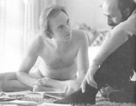

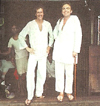



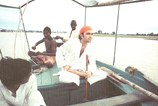

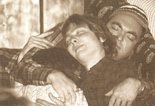



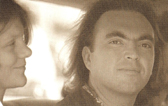
























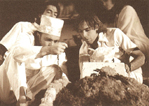



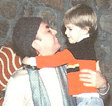











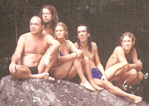



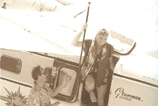
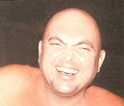
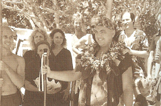
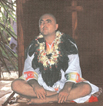
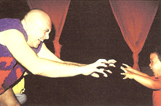

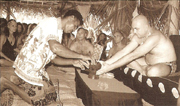










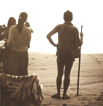
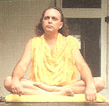















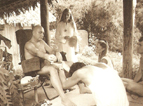

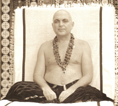
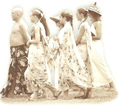












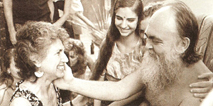

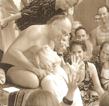



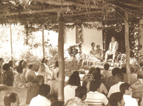
















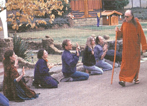













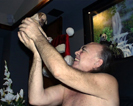




























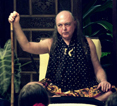

















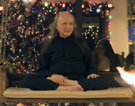
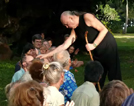

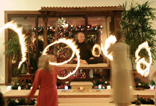

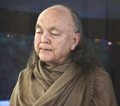
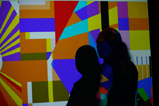
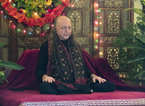
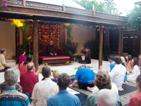








Michael Harings - Middletown, CA, United States March 15, 2025 2:37PM
Music be the food of love, so play on man!